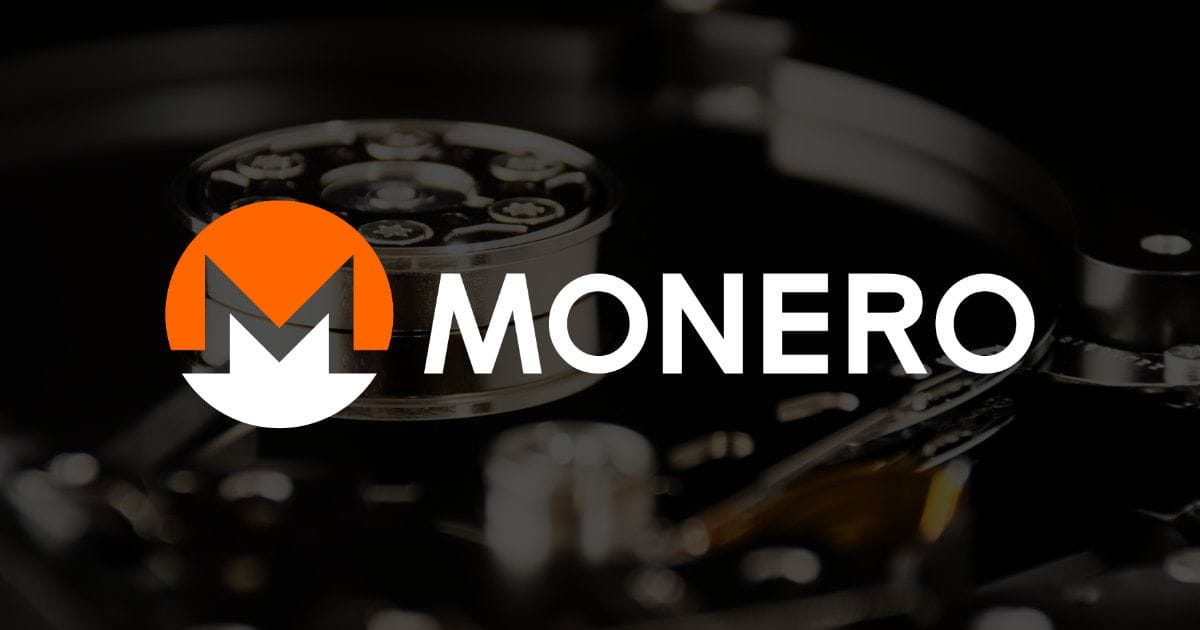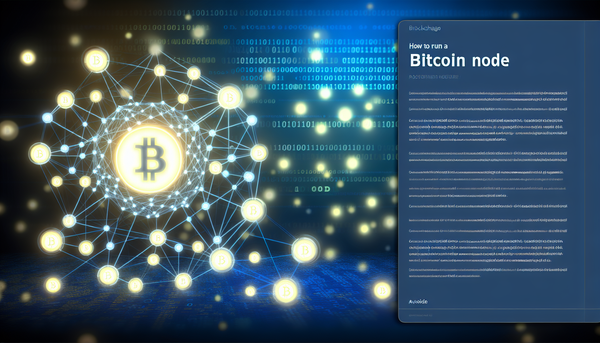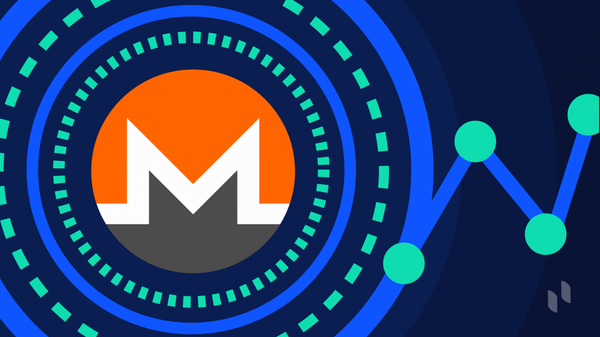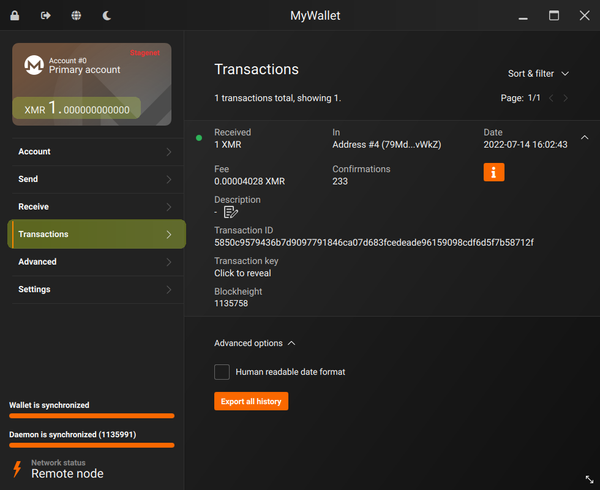What in the Crypto World is a Monero Node Anyway? (And Why Should I, Like, Care?)

Okay, so you've probably heard of Monero. Privacy coin, right? Dark web stuff? Maybe. But it's also, like, a really interesting piece of technology. And people talk about "nodes" all the time in crypto. Bitcoin nodes, Ethereum nodes, Monero nodes... it's node-node-node everywhere. And honestly, for a while I was just nodding along, pretending I knew exactly what everyone was on about. Nodes. Sure, nodes. Sounds important.
But then I actually started digging. And you know what? It is important. Like, really important. Especially for something like Monero, which is all about privacy and decentralization and stuff.
So, let's try to figure this out together. What is a Monero node? And why should you, or even I, sitting here in my pajamas, actually give a darn? Bear with me, because my brain sometimes jumps around a bit. It's like trying to catch a greased piglet sometimes, these thoughts. But we'll get there. Hopefully.
Nodes: The Unsung Heroes of Decentralization (Or Something Like That)
First, forget Monero for a second. Let's just think about "nodes" in general, in the context of blockchain stuff. Imagine... okay, bad analogy alert incoming... imagine a library. A really, really, really big library. Like, the Library of Alexandria on steroids, but digital. This library holds all the information about Monero transactions. Every single one. Since, like, forever.
Now, in a regular, normal, boring database – think of your bank's records, or Facebook's user data (shudder) – there's usually a central computer, or maybe a few central computers, that hold all the information. They're in charge. They decide what's real, what's fake, what gets added, what gets deleted (hopefully not your bank balance!).
But blockchain is different. Blockchain is all about not having that central authority. It's about decentralization, remember? Think of it as, instead of one giant library, you have lots of smaller libraries, all holding the same information. These smaller libraries? Yeah, you guessed it. They're the nodes.
Each Monero node is basically a computer that's running the Monero software and has downloaded a copy of the Monero blockchain. It’s like a volunteer librarian, keeping a copy of the entire Monero history book. And it's not just keeping it. It's also actively participating in the Monero network.
See, nodes don't just sit there looking pretty (though some might be in fancy server rooms, who knows?). They actually do stuff. They:
- Verify Transactions: When someone sends Monero to someone else, that transaction needs to be checked to make sure it's legit. Nodes do this checking. They make sure the sender actually has the Monero they're trying to send and that the transaction follows all the Monero rules. It's like the librarian checking if a book is properly stamped before letting it leave the library.
- Relay Transactions: Once a node verifies a transaction, it doesn't just keep it to itself. It broadcasts it out to other nodes on the network. Think of it like whispering the transaction information down a long line of librarians, each one passing it on to the next. Eventually, the transaction gets to enough nodes that it can be included in a block.
- Store the Blockchain: As I said, each node stores a copy of the blockchain. This means they have the entire history of Monero transactions. This is what makes the blockchain so secure and transparent (well, in Bitcoin's case maybe more transparent, Monero is more... opaque, in a good way!). It's like each librarian has their own copy of the entire library catalog. If one library burns down (node goes offline), the information isn't lost because there are tons of other libraries (nodes) still holding it.
- Help Secure the Network: By verifying and relaying transactions, and by storing the blockchain, nodes are actively participating in keeping the Monero network running smoothly and securely. They're the backbone, the infrastructure, the... uh... the plumbing? Maybe not plumbing. More like the nervous system. Yeah, the nervous system of Monero!
Okay, I might be getting a bit carried away with the analogies. But hopefully, you're starting to get the picture. Nodes are essential. Without nodes, there's no Monero network. It's like trying to have a conversation with only one person – it's just a monologue, not a network!
But Wait, There's More! Different Flavors of Monero Nodes
Now, it's not quite as simple as "one node fits all." There are actually different types of Monero nodes. This is where it can get a little bit… nuanced. (Nuanced is a fancy word for "slightly more confusing," right?)
The main distinction is between full nodes and light nodes. Think of it like… full-fat versus skim milk? No, wait, that’s a terrible analogy. Let’s try again. Think of it like… a full library versus a branch library.
- Full Nodes: These are the heavy hitters. The real deal. They download and store the entire Monero blockchain. Every single block, every single transaction, all the way back to the very beginning. They also participate in verifying and relaying transactions. They are the most important type of node for the health and security of the Monero network. Think of them as the main branch of the library, with all the books, all the librarians, and all the responsibilities. Running a full node is the most "pure" form of participating in the Monero network.
- Light Nodes (or Simple Payment Verification - SPV - Nodes): These are the… lighter version. They don't download the entire blockchain. Instead, they rely on full nodes to give them the information they need. They can still send and receive Monero, but they don't have the full history and don't participate in verifying all transactions directly. Think of them as a smaller branch library. They can still help you borrow books (send/receive Monero), but they rely on the main library (full nodes) for the bulk of the book storage and organization. Your Monero wallet, the software you use to manage your Monero, often connects to a light node or even a remote node (more on that in a sec) by default. It’s easier to use, requires less storage space and processing power, but it's also less… independent.
Then, there's another distinction that's important, especially when you're thinking about using Monero:
- Local Nodes: This just means a node that you are running on your computer. It could be a full node or a light node (though usually, when people talk about "running a node," they mean a full node). If you run a local full node, you are directly participating in the Monero network, verifying transactions, securing the network, and all that good stuff. You are your own librarian! This is the most private and secure way to use Monero because you're not relying on anyone else's node.
- Remote Nodes: These are nodes that are run by someone else, and your wallet connects to their node to interact with the Monero network. Most wallets, especially mobile wallets, use remote nodes by default because it's much easier for the user. You don't have to download the blockchain, you don't have to keep your computer running all the time, etc. It's convenient, but it comes with a privacy trade-off. When you use a remote node, you are essentially trusting that node operator. They could potentially see your transactions (though with Monero's privacy features, they wouldn't know who you are or what you're buying, just that a transaction happened). It's like borrowing a book from a friend's personal library instead of going to your own library. Convenient, but you're relying on your friend.
And sometimes you'll hear about pruned nodes. These are full nodes, but they don't store the entire blockchain history. They only keep a recent portion of it. This saves on storage space, but they can still verify new transactions and participate in the network. It's like a library that only keeps the most recent editions of books and archives the older ones somewhere else. Still useful, but not quite as comprehensive as a full, unpruned node.
Ugh, my head is starting to spin a bit. Nodes, nodes everywhere! Full nodes, light nodes, local nodes, remote nodes, pruned nodes… It’s like node soup!
So, Why Should I Run a Monero Node? (The "Why Bother?" Section)
Okay, so we've established what a Monero node is. But the big question is: why should you or I bother running one? Especially a full node, which takes up a bunch of disk space and uses up resources on your computer. Is it really worth it?
Honestly, for most people, probably not. Let's be real. Running a full Monero node is not exactly "plug and play" for the average person. It requires some technical know-how, some disk space, and leaving your computer running for a while (at least initially to sync the blockchain). And you don't get any direct financial reward for running a node in Monero (unlike some other cryptocurrencies where you can "stake" or "mine" with nodes).
So, if there's no direct financial incentive, why do anyone run a full Monero node? Well, here's the thing: it's about supporting the network. It's about privacy and decentralization. It's about being a good citizen of the Monero ecosystem (crypto-citizen? Is that a thing?).
Here's a breakdown of the reasons why running your own Monero full node is actually pretty awesome, even if it doesn't make you rich:
- Enhanced Privacy: When you use your own full node, you are connecting directly to the Monero network. You're not relying on any third-party remote node. This significantly improves your privacy. Your transactions are broadcast directly from your node, not through someone else's server. It's like sending a letter directly to the post office instead of handing it to your nosy neighbor to mail for you.
- Increased Security: By verifying transactions yourself with your own node, you are relying less on the honesty of others. You are taking control of your own security. You're not blindly trusting a remote node operator to be honest and accurate. It's like checking your own bank statement instead of just believing what the bank tells you.
- Strengthening Decentralization: The more people who run full nodes, the more decentralized the Monero network becomes. Decentralization is the core principle of cryptocurrencies. It means no single entity controls the network. More nodes mean more resilience, more security, and more resistance to censorship. It's like having more libraries in a city – the more libraries, the more knowledge is accessible and the less likely it is that knowledge can be controlled by a single authority. By running a node, you're actively contributing to this decentralization. You're saying "Hey, I believe in this decentralized thing, and I'm going to put in a little effort to help make it stronger!"
- Supporting the Monero Network: Running a full node helps the entire Monero network function. It helps verify transactions, relay information, and keep the blockchain secure. It's like volunteering at your local library – you're helping keep the library running for everyone.
Okay, maybe I'm getting a bit too idealistic here. But seriously, running a full Monero node is a really good thing for the Monero ecosystem. It's like… planting a tree. It might not benefit you directly right away, but it benefits everyone in the long run, and it contributes to a healthier environment. (Crypto-environment? Again, is that a thing?)
Running a Monero Node: Is it Hard? (A Very, Very Brief Overview)
So, you're intrigued? Maybe even a little bit tempted to run your own Monero node? Awesome! (High five!)
Now, I'm not going to pretend it's super easy. It's not like installing Candy Crush on your phone. But it's also not rocket science. (Unless you're running a node in actual rocket science, which would be pretty cool).
Here's a super simplified overview of what's involved in running a Monero full node:
- Download the Monero Software: You need to download the official Monero software, called "monerod," from the getmonero.org website. Make sure you download it from the official website to avoid getting malware. (Safety first, always!).
- Install and Run Monerod: Installation depends on your operating system (Windows, Mac, Linux). There are pretty good guides on the Monero website and in the Monero community. Basically, you'll need to run the
monerodexecutable. - Sync the Blockchain: When you first run
monerod, it will start downloading the entire Monero blockchain. This can take a while, especially the first time. It can be hours, or even days, depending on your internet connection and computer speed. Be patient! Think of it as downloading that really, really big library catalog. - Keep it Running: Once your node is synced, you need to keep it running to continue participating in the network. This means leaving your computer on and connected to the internet. You don't have to have it running 24/7, but the more it's running, the more helpful it is to the network.
That's the super-duper simplified version. There are more advanced configurations and options, but that's the basic gist of it. If you're even a little bit technically inclined, you can probably figure it out. And there's a great Monero community out there that can help if you get stuck. They're usually pretty friendly and helpful (for crypto people, anyway!).
Okay, My Brain is Officially Fried. Let's Wrap This Up.
Phew! That was a bit of a brain dump, wasn't it? We covered a lot of ground. From libraries and librarians to nervous systems and trees. Hopefully, you now have a slightly better idea of what a Monero node is, why it's important, and why you might even consider running one yourself.
Key Takeaways (Because my thoughts are probably all over the place):
- Monero nodes are the backbone of the Monero network. They verify transactions, store the blockchain, and keep everything running smoothly.
- Full nodes are the most important type of node. They store the entire blockchain and fully participate in the network.
- Running your own full Monero node is good for privacy, security, decentralization, and the overall health of the Monero network.
- It's not super easy to run a node, but it's also not impossible. And the Monero community is there to help.
- Even if you don't run a node yourself, understanding what they are and why they're important is still valuable. Especially if you're using Monero.
Look, I’m not saying everyone needs to rush out and become a Monero node operator right this second. But hopefully, this article has demystified nodes a little bit and shown you why they are such a crucial part of the Monero ecosystem. They are the unsung heroes, the quiet guardians, the… uh… well, they’re just really important. Okay?
And maybe, just maybe, after reading this, you'll think twice before just blindly using a remote node and consider taking the plunge and running your own. Even if it's just for a little while. Just to see what it's like. You might even enjoy it. (Okay, maybe "enjoy" is a strong word. But you might feel a sense of… crypto-virtuousness? Yeah, let's go with that.)
Anyway, I'm going to go lie down now. My brain needs a node reboot. Or something. Thanks for sticking with me through my rambling thoughts! Hopefully, some of this made sense. And if not… well, there’s always Google, right? Just don't forget to use a privacy-focused search engine! Because, you know, privacy. It’s kind of the whole point of Monero, after all.




